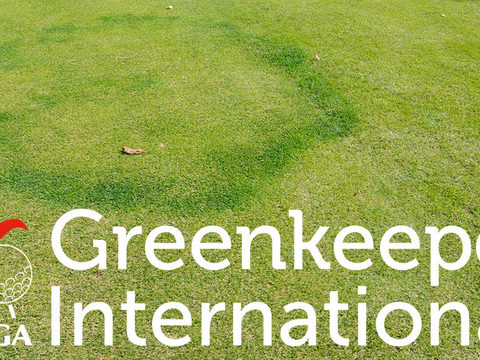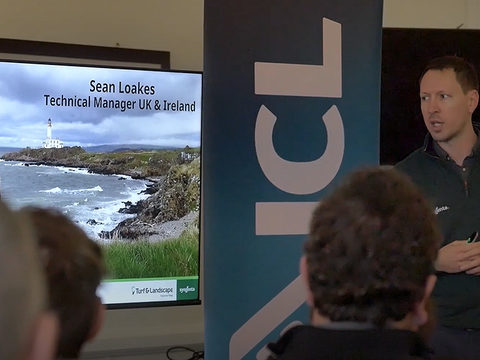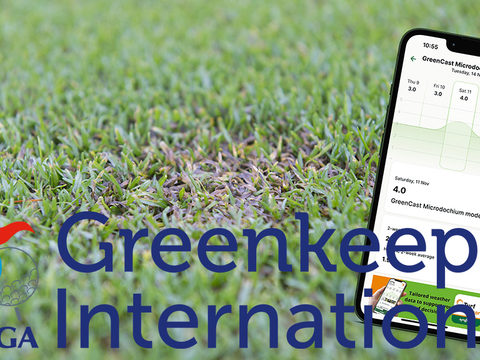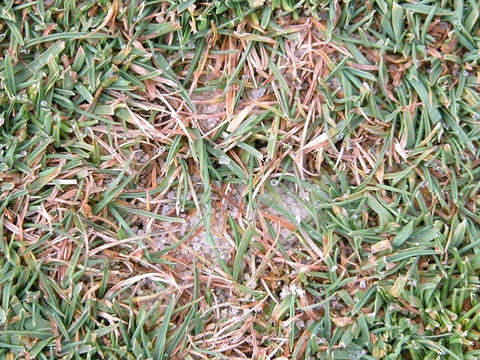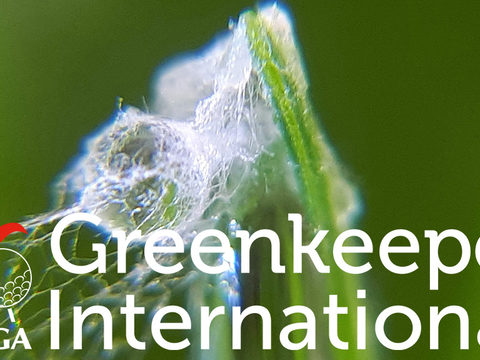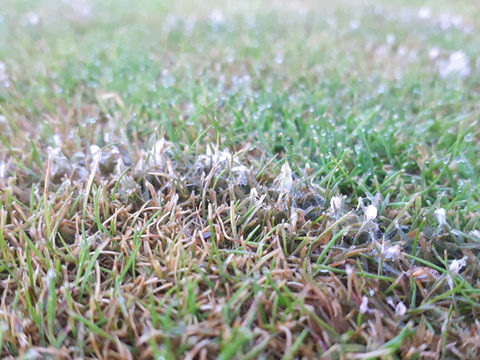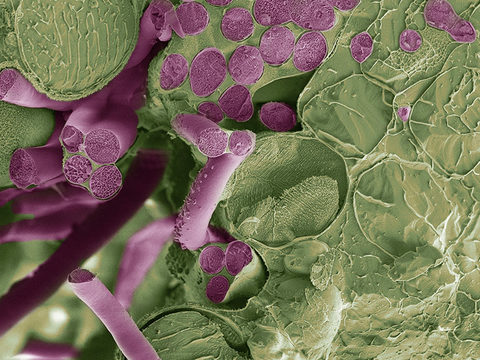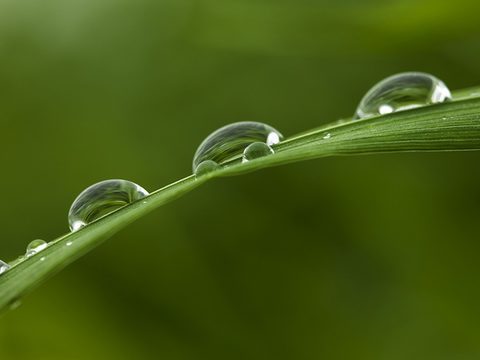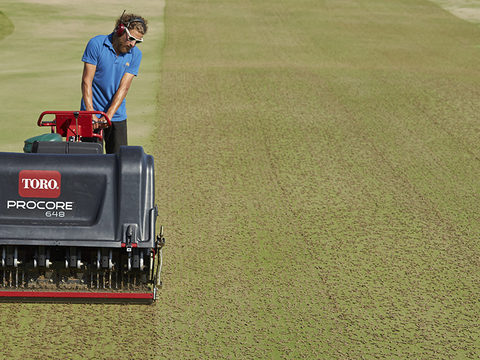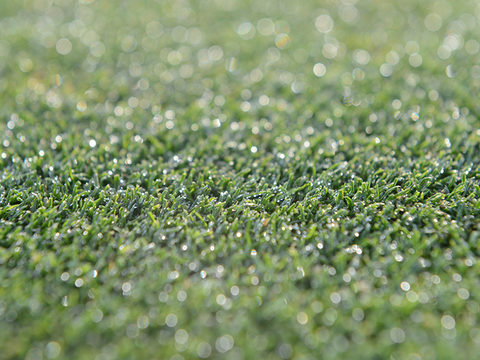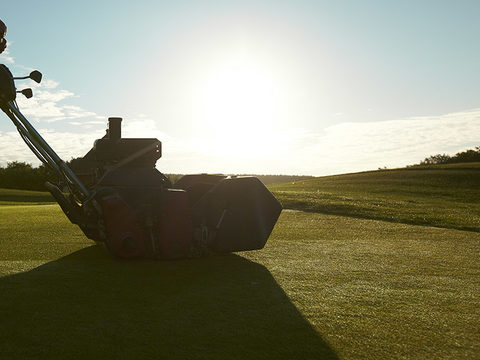Get ahead of anthracnose
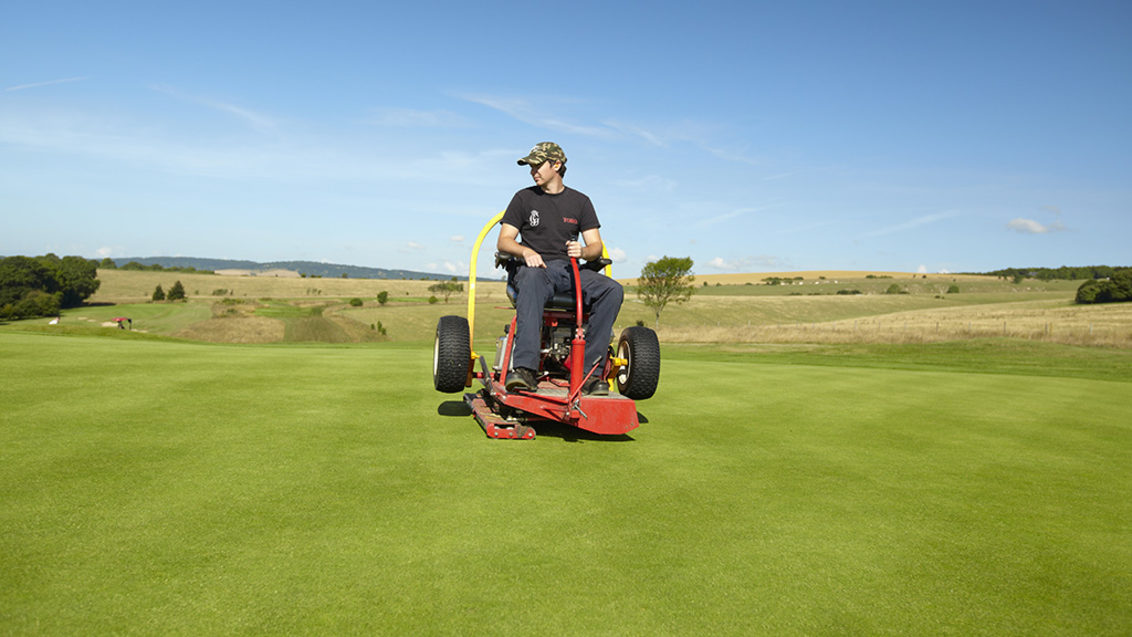
Anthracnose is increasingly reported as one of the key challenges for maintaining consistent turf quality. Many of the interrelated stress factors that will influence when outbreaks will occur are happening earlier and with greater severity.
We really need to be reducing the stress through the May period because, whilst Anthracnose damage is on the horizon, the stresses that cause that weak plant that is susceptible to that infection are happening now. There are now some exciting novel new technologies to help manage the threat of anthracnose.
It’s one disease where pre-planning an Integrated Turf Management (ITM) approach to prevent outbreaks can pay huge dividends.
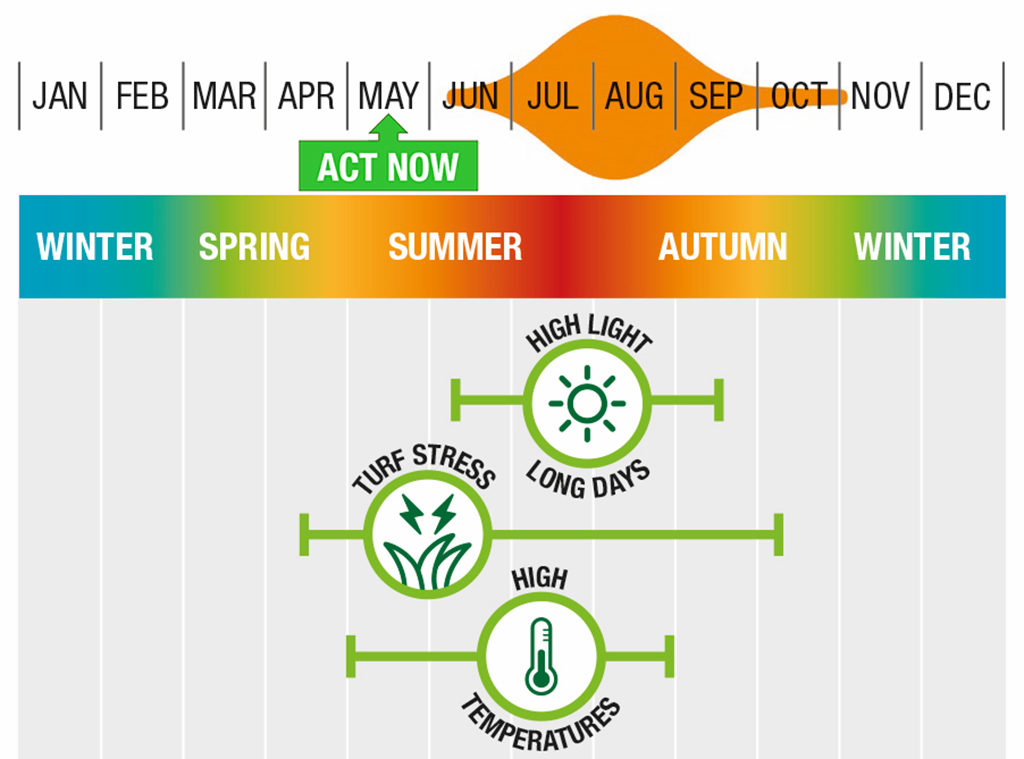
Historic disease records on GreenCast show that foliar blight outbreaks in May would be unusual, but shouldn’t be discounted if conditions are hot and humid – particularly if surfaces suffered from basal rot infections earlier in the season and there is residual pathogen in organic matter.
Late spring weather conditions of greater concern is the high diurnal swings, from hot days to cold nights. That puts turf under intense stress – often expressed as anthocyanin purpling of leaves.
The shock for plants can be further exacerbated when we think growing conditions are good on warm days and start to push turf harder, only for it to be hit night after night by cold. It is an area where Growing Degree Days can be extremely useful as a check for growth potential.
Calculate your Growing Degree Days here
That really ties into the nutrition programme for greens. There has been a clear trend to lower nitrogen inputs to keep greens leaner and faster, however research in both the US and the UK has demonstrated too little N was a major influencing factor in anthracnose development.
The skill is in remaining flexible enough to judge the amount of N required to maintain plant health – which will be different for every course and situation; or even at a micro level, from green to green. Suffice that it might need to be a little more than anticipated where anthracnose is a challenge.
As a practical measure, smarter selective use of technologies such as a slow-release fertiliser on those greens more susceptible to outbreaks, on top of the normal nutrition programme, could provide them a crucial little extra through the pinch periods, for example.
ITM techniques for anthracnose action
- Supply sufficient nutrition to feed healthy growth
- Top dress lightly and regularly to protect turf crowns
- Manage moisture effectively
- Ease off cutting height where practical
- Treat high risk greens appropriately
- Watch out for hot humid weather conducive to disease
- If turf health and stress has been compromised, be prepared to use a well-timed preventative summer fungicide
There is also a lot of very good research evidence that lower cut height increases the risk of anthracnose. Not unsurprisingly, less green leaf area will impose stress on the pant and its ability to recover. But lowering cutting heights in May is often a necessary evil to achieve the smoothness and speed demanded by clubs and golfers.
Using combinations of cutting, roiling, top dressing, PGR and nutrition could help deliver the playing surface conditions at a marginally higher cut that could just ease turf stress conditions.

Read more on anthracnose in the GreenCast Disease Notes
(Above - anthracnose foliar blight - left - and basal rot. Below - anthracnose under the microscope with acervuli on infected leaves)
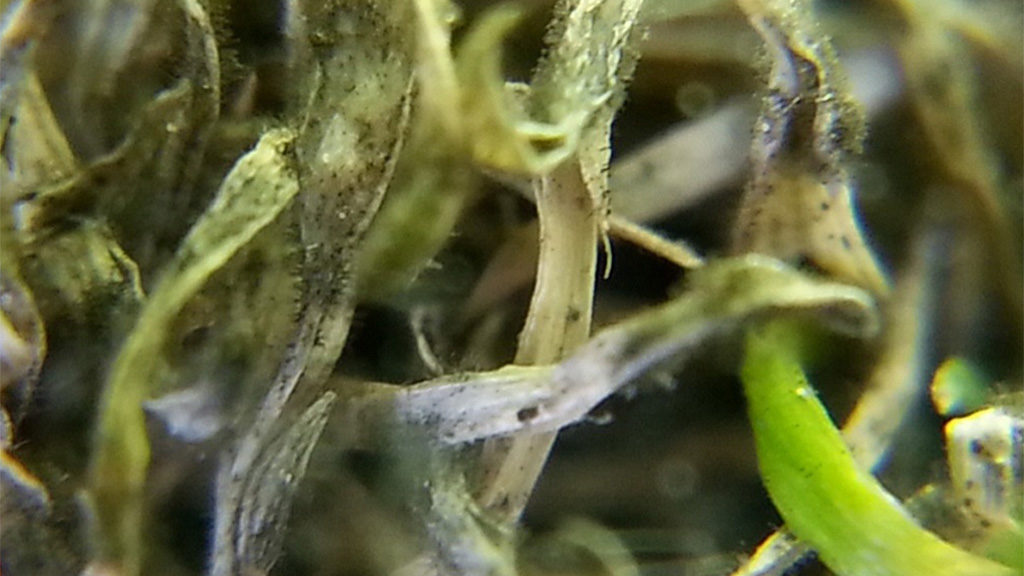
The most obvious reason to use Primo Maxx over the spring and summer is to manage turf growth and improve quality, there’s a huge volume of Primo Maxx research around the world has consistently shown the ability to limit the build-up of damaging reductive oxygen species (ROS or free radicals) from a range of stress factors.
Then key to getting the best results from pre-stress conditioning, which will have the greatest effect on anthracnose reduction, is to have the programme running before the stress occurs. That applies for drought, light, heat or just heavy wear and tear from a tournament, for example. Keeping turf in consistent growth regulation could maintain the optimum stress reduction.
The effects will be further enhanced if then stress factors themselves can be reduced.
To limit drought stress, for example, a good moisture management strategy is essential. Areas under drought stress or dry patch affected areas will be the first to suffer under the intensity of greens maintenance.
Making best use of water resources has been a hot topic for the golf industry, with an efficient irrigation system, ideally linked to regular use of moisture probes helps to optimise water application where it’s most required.
A Qualibra wetting agent programme can aid water penetration to maintain playing surface quality and minimise evapotranspiration losses, whilst still holding moisture deeper in the root zone for better utilisation by the turf.
Use Turf Rewards to claim a free moisture meter with Qualibra purchases
During these stress periods light is often the final trigger point. It probably hasn't been recognised as much it should have been in the past – possibly as there’s not been a way to manage it as we have now, with Ryder.
Ryder does a really good job of reducing the amount of UV light reaching the plant. That by itself is a big stress that is eliminated from the long list of stresses we have in May. However, in dry or droughty rootzones, the plant will only start to wilt when the light levels get high enough to do damage; where trials have repeatedly shown the pigment can minimise the effects.
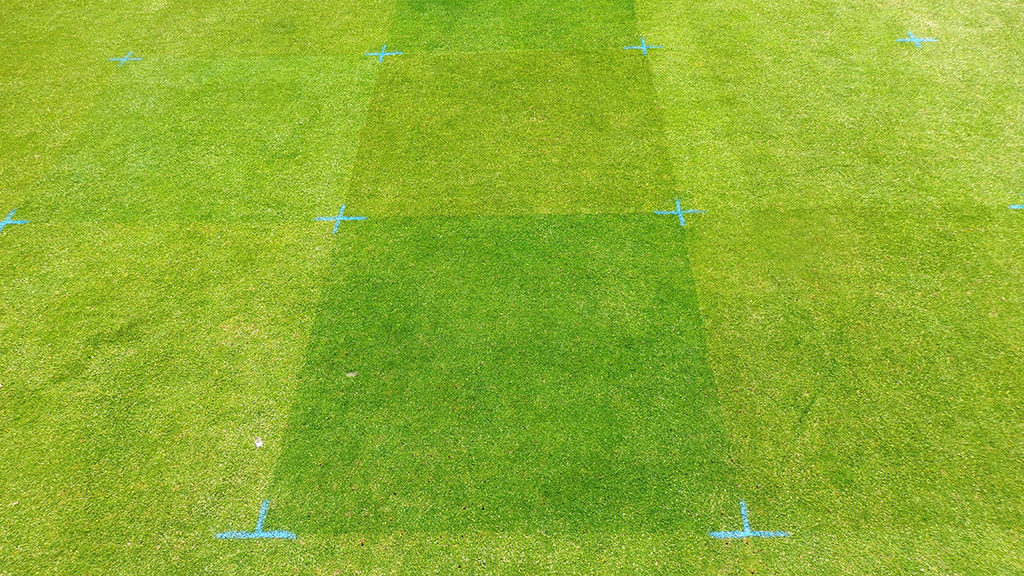
There is a slight danger that the additional healthy green colour of treated turf could suggest the same levels of nutrition were not required, when we have already seen for anthracnose it's crucially important.
And where we are looking to manage abiotic stress more effectively, we’re seeing some benefits of adding additional amino acids through an earlier start to a Hicure biostimulant programme.
Whenever a turf plant comes under a stress, it will use a range of amino acids to build specific proteins to combat that particular stress. If we can help the plant by supplementing those amino acids, it does not need to break down or scavenge proteins from other plant functions, which enables it to stay healthier during that period of stress.
Whilst Hicure biostimulant has no direct effect on the anthracnose pathogen, if as many measures to limit stress effects can be effectively employed early in the season, the incidence of disease could be significantly reduced throughout the rest of the year.


